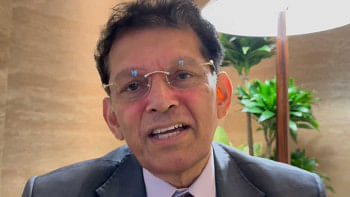100 years of Nazrul’s ‘Bidrohi’ : The captivating narrative of a young rebel

A 22 year-old Kazi Nazrul Islam wrote the poem, "Bidrohi" at Kolkata's Taltala Lane in 1921, according to Comrade Muzaffar Ahmed's memoir of the National Poet. Since dabbing the pen in ink could not pace with his thoughts at the time, he quickly picked up his pencil and wrote the entire poem in one night. "Bidrohi" was published in the magazine, "Bijli" and other periodicals soon after.
On the birth anniversary of the great poet, let us look back on this historical poem.
"Bidrohi" or "The Rebel" is a captivating poem that speaks against all forms and forces of oppression around the world. The 'rebel' of Nazrul's poem is the unending fanatic against grievance, incomprehension, and oppression, while the 'I' (Ami) is the defender of the marginalised. Hundred years later, apart from its historical significance, "Bidrohi" transcends the borders of time, speaking for humanity aloud.
The significant number of translations of this poem alone not only speaks about its relevance but also about how words can provoke people. Reciters throughout history have presented the rhetorically sharp notes of "Bidrohi" in thought-provoking and enlightening ways. Three eminent reciters of the country shared their perspectives on the impact and relevance of the poem.
Noted educationist, reciter, writer, and cultural activist Kazi Gulshan Nahar Madina considers "Bidrohi" to be a reflection of Narul's true personality. Rising above all communal narrowness, the poem's verses project an aspiration of a just society. After the First World War, the socialist movements tremendously touched Nazrul's mind and added new dimensions to his poetic sensibilities.
In "Rajbandir Jabanbandi", Nazrul said, "I am a poet, sent by the Almighty to reveal the undisclosed truth, to give form to the intangible creation. My message is the revelation of truth." In reference to it, Kazi Madina says that Nazrul's intention of provocation is evident in the poem. He seeks to confront and combat oppression of all forms, with the words, Ami aponare chara korina kahore kurnish.
To her, Nazrul's poem emphasises the convergence of soft and firmness, of the romantic and the violent, and of a vice and a virtue-- a series of contraries that bind into an aesthetically and politically strategic unity of opposites against falsehood, repression and sinister powers. "Bidrohi" is a symbol for humanity throughout the ages.
Noted reciter, educationist, and researcher Rupa Chakraborty reminisces her first encounter with the poem. As a schoolgirl, the meaning of the poem was rather incomprehensible for her, but its stylistic rhythm undulated her even at that tender age. As a student of Bangla Literature in Dhaka University, the analysis of "Bidrohi'' was exemplary for her. Comparing mythologies from the Middle East to those of Hinduism and pulling commonalities brought communities together astoundingly.
Nazrul's "Bidrohi" also earned him the title of the Rebel Poet. However, the "I" in the poem does not represent Nazrul as an individual. It is representative of humanity who stood against the oppressors; freedom is what he seeks through his allegorical rhetoric.
Looking through history and the present times, "Bidrohi" offers an indispensable statement to anyone who seeks freedom. During the Liberation War of 1971, this poem brought us strength as a young nation in the making. Chakraborty also mentions that the significance of "Bidrohi" is so outstretched that its centenary must be celebrated with grandeur. The day it was penned and the day it was published are different. The exact date of its inception should be decided by the national authority and celebrated across the world.
Renowned reciter and educationist Mahidul Islam through his analysis points out the two significant aspects of the poem: the syntax and the underlying statement and power of the words due to the syntax. Reciting the poem creates a stereophonic tonal modulation that readily grabs attention of the reader as well as the listener. Yet, it is musical; it has a harmony in it that transcends the bindings of language, so much so that anyone who doesn't understand the language would be able to grasp its intended meaning for its literary and artistic brilliance. Another notable aspect of the poem is in its use of mythopoesis. At first glance, readers might not comprehend its full meaning, but they will be compelled to extract the meaning, which in turn will broaden their perspective.
If we look at the social structure of a hundred years back, the oppression of the British Raj and the internal clash between religions come to mind. "Bidrohi" can be interpreted as a reflection of the untold emotions of the common man who suffered.
Drawing parallels to recent incidents, Islam feels that the last two lines of the poem, Ami-chiro-bidrohi-bir--Ami bishwo charaye uthiyachi eka chiro unnoto sheer, is a soliloquy of a child who confronts the oppressing army in Palestine, holding its mode of praxis against all forms of oppression.
"Bidrohi" is still relevant today, where global fear tactics have shunned the voices of the common man.
The author is an art researcher and writer in the making. She can be reached at [email protected].

 For all latest news, follow The Daily Star's Google News channel.
For all latest news, follow The Daily Star's Google News channel. 



Comments